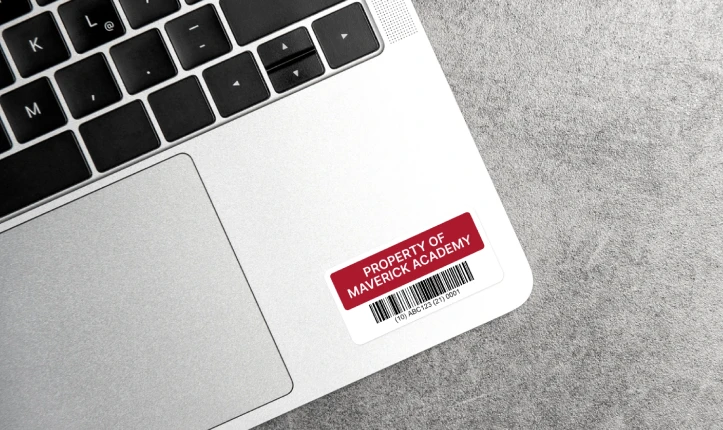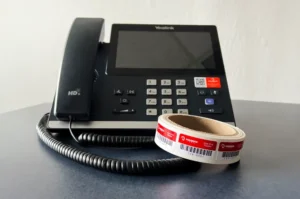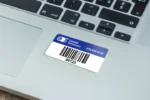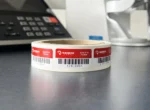Asset tagging is important for businesses. Ordering the right tags is crucial for this process. But with so many options, how do you know which tag is the right fit for your application? We break down the different types of asset tags we offer, and which tag might be the right fit for you.
What is an Asset Tag?
Asset Tags are labels used to track equipment and assets for easy management and asset tracking. Property ID Labels are tags that help track assets, manage location data, maintenance history, and prevent fraud in organizations. You can also use them for equipment tracking.
Tags can have barcodes, sequential numbers, and important company info. Asset tags help companies keep in sight their owned assets and simplify inventory tracking.
Why Should You Use Asset Tags?
Asset tags, especially those with QR or barcodes, let you follow an item through its lifecycle. This can be helpful in a wide variety of ways. Frequently, companies use tags as the foundation for inventory tracking purposes.
Asset tags can also help with auditing and accounting compliance. They can give management the full scope of current assets and future needs, and track high-end items that need a physical ID.
In addition, asset tags act as the first line of defense against loss or theft of moveable assets. By tagging a laptop or other tool, you increase the chances of its return.
Different Tags for Different Purposes
Some companies need tags with a serial number, barcode, company name, and logo on indoor materials for their property. Polyester 2-mil metalized matte silver material asset tags are our most popular and are what we use in house. This tag is also our most economical option.
Tamper-Evident Asset Tags
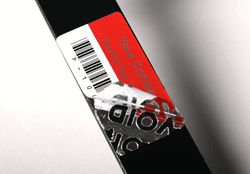
Do you need your tags to have a security feature? Expensive equipment has a greater risk of theft. Our most popular asset tag can help with this, but someone can peel them off with enough time and tenacity.
In many cases, being able to remove the asset tag can be useful. For example, we remove our tags before donating items. But in some cases, you need a tag that you cannot remove.
We create our VOID pattern asset tag with several layers, including separate text and security or “residue” layers. When someone attempts to remove the label, the sticky part between the layers breaks. This allows the top layer to be removed. The bottom layer remains and can be difficult and time-consuming to completely clean-off.
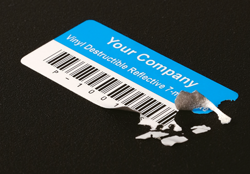
The material used to make our Destructible asset tags is breakable. They are easy to take off and put on, but once they cure in place, they are hard to remove.
These tags fragment when someone tries to peel them off and stick to the surface. Removing all traces of this material from equipment is challenging, leaving behind evidence of any attempted removal.
Outdoors and Other Harsh Environments
What if you store heavy equipment outside or clean assets with chemical abrasives? Our asset tags withstand almost any environment and are designed to last. Many of our materials make great asset tags for equipment. We have three types of asset tag materials for tough outdoor conditions: Aluminum Foil, Metal, and LexSaver®plus.
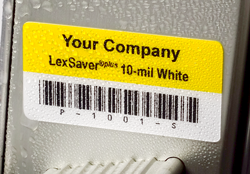
LexSaver®plus is what we recommend for harsh environments. This material is resistant to heat, tearing, excessive abrasion, and stretch. The protective coating is UV resistant and has an embossed velvet finish that is ultra-durable. LexSaver®plus is best for smooth surfaces, and it will not conform to uneven surfaces.
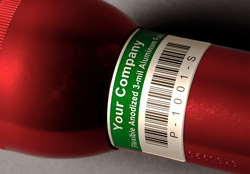
Anodized Aluminum Foil asset tags are the most flexible asset tags we offer. This material is perfect for curved surfaces. These tags are incredibly strong, and the barcodes and serial numbers are inside the anodized layer of the label.

Anodized Metal tags are great for equipment exposed to sunlight, salt spray, high temps, cleaning solvents, or constant abrasion. The material permanently etches the colors and graphics, and it won’t crack, chip, or peel over time. This material also has our strongest adhesive.
Choosing the Right Asset Tag
Before purchasing your asset tags, you should take stock of what you will be labeling and what the environment will be.
Are you tagging exorbitantly expensive assets that require extra security? Are you tagging tools or equipment that will be outdoors for long periods? Will you need barcode scanners and do certain departments have specific requirements?
You must answer these kinds of questions before you can select the proper asset tag.
Have questions? Reach out to us! A customer service representative can assist you with any inquiries you may have.
